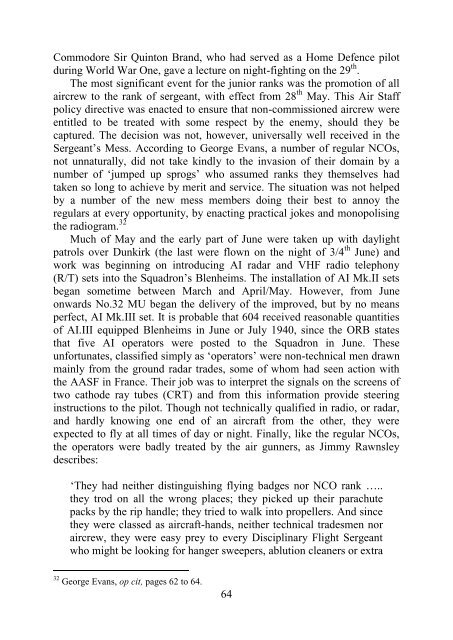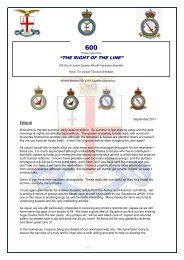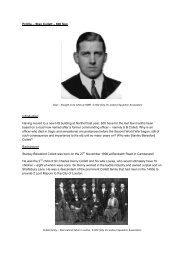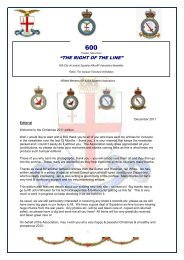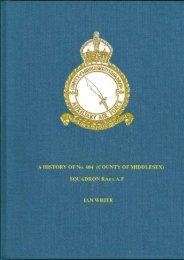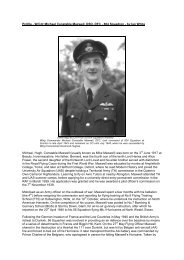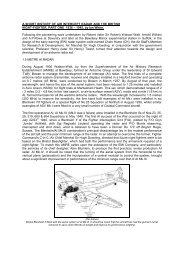If You Want Peace, Prepare for War - Home Page
If You Want Peace, Prepare for War - Home Page
If You Want Peace, Prepare for War - Home Page
You also want an ePaper? Increase the reach of your titles
YUMPU automatically turns print PDFs into web optimized ePapers that Google loves.
Commodore Sir Quinton Brand, who had served as a <strong>Home</strong> Defence pilot<br />
during World <strong>War</strong> One, gave a lecture on night-fighting on the 29 th .<br />
The most significant event <strong>for</strong> the junior ranks was the promotion of all<br />
aircrew to the rank of sergeant, with effect from 28 th May. This Air Staff<br />
policy directive was enacted to ensure that non-commissioned aircrew were<br />
entitled to be treated with some respect by the enemy, should they be<br />
captured. The decision was not, however, universally well received in the<br />
Sergeant‟s Mess. According to George Evans, a number of regular NCOs,<br />
not unnaturally, did not take kindly to the invasion of their domain by a<br />
number of „jumped up sprogs‟ who assumed ranks they themselves had<br />
taken so long to achieve by merit and service. The situation was not helped<br />
by a number of the new mess members doing their best to annoy the<br />
regulars at every opportunity, by enacting practical jokes and monopolising<br />
the radiogram. 32<br />
Much of May and the early part of June were taken up with daylight<br />
patrols over Dunkirk (the last were flown on the night of 3/4 th June) and<br />
work was beginning on introducing AI radar and VHF radio telephony<br />
(R/T) sets into the Squadron‟s Blenheims. The installation of AI Mk.II sets<br />
began sometime between March and April/May. However, from June<br />
onwards No.32 MU began the delivery of the improved, but by no means<br />
perfect, AI Mk.III set. It is probable that 604 received reasonable quantities<br />
of AI.III equipped Blenheims in June or July 1940, since the ORB states<br />
that five AI operators were posted to the Squadron in June. These<br />
un<strong>for</strong>tunates, classified simply as „operators‟ were non-technical men drawn<br />
mainly from the ground radar trades, some of whom had seen action with<br />
the AASF in France. Their job was to interpret the signals on the screens of<br />
two cathode ray tubes (CRT) and from this in<strong>for</strong>mation provide steering<br />
instructions to the pilot. Though not technically qualified in radio, or radar,<br />
and hardly knowing one end of an aircraft from the other, they were<br />
expected to fly at all times of day or night. Finally, like the regular NCOs,<br />
the operators were badly treated by the air gunners, as Jimmy Rawnsley<br />
describes:<br />
„They had neither distinguishing flying badges nor NCO rank …..<br />
they trod on all the wrong places; they picked up their parachute<br />
packs by the rip handle; they tried to walk into propellers. And since<br />
they were classed as aircraft-hands, neither technical tradesmen nor<br />
aircrew, they were easy prey to every Disciplinary Flight Sergeant<br />
who might be looking <strong>for</strong> hanger sweepers, ablution cleaners or extra<br />
32 George Evans, op cit, pages 62 to 64.<br />
64


